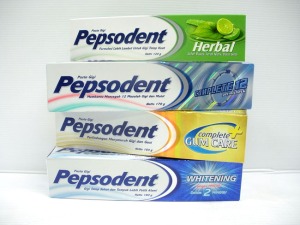It all has to do with creating a habit. Not just a habit, but a habit that lasts, that people crave to do it again and again. Huh? What does Pepsodent have to do with habit? Perhaps it’s useful to look at our brain and see how a habit is started.
Habit Loop: How Habit Works
Human brain can be seen like an onion. It consists of layers of tissues that function differently. The outer layers are generally where complex thinking occurs. When we peel those layers off towards the core, we can find basal ganglia, which is sort of like a golf ball. It is the part of the brain that recalls patterns and acts on them. It controls the things we do automatically like breathing, walking, eating, etc which have become a habit. In fact, it stores our habits even though we are sleeping.
As it happens, people don’t really think when doing things that they do. Forty percent of actions people performed each day weren’t actual decisions, but habits. Why? Because it is efficient. Our brain uses much less resources when performing habits. The first time a baby learns to walk, she may use a lot of resources in her brain to make it happen. She needs to calculate how much force to use in moving each leg, how to keep the balance, which leg to swing first, how fast to walk, etc. But after walking over and over again, the process has become so ingrained in our brain that we don’t need to calculate every little details and just go with the most efficient way that our brain thinks suits us well. As a result, it frees our brain resources to think about more important things, like building a rocket or making a start-up company, for instance. Can you imagine if your brain, like a computer, has to calculate every nitty gritty details that it does? It will crash!!
Okay. So that’s how a brain functions. But how do we create a habit? The way a habit works is when we see things around us as cues to do something, and in the end, we get a reward. For example, when you pass by McDonald’s, you will smell the distinct aroma of french fries that is so enticing. This will tempt you to go there and buy it so you can satisfy your tongue. If you keep indulging in the temptation, your feet will unthinkingly lead you there every time you smell it. The smell here (or in many cases, the huge yellow M logo) is the cue, you going there is the routine, and French fries is the reward. So the habit loop works like this: Cue -> Routine -> Reward. Easy peasy.
Now, that process only is not strong enough to make a habit last. You need to CRAVE the reward so that when you see the cue, you automatically think of the reward and you want it so bad. That’s why when you give in to the temptation many times, your brain starts to develop a crave. You will feel fidgety if you don’t buy the French fries when you pass by McDonald’s.
Pepsodent’s Clever Blueprint
 A few decades ago, P&G wanted to sell its toothpaste. Unfortunately, in the early 1900s, people did not have a habit of tooth brushing. In fact, people’s teeth had been rotting in years and no one seemed to care enough. There were some teeth cleaning products in the market that promoted itself as making teeth clean and beautiful. But it’s not enough to develop tooth brushing habit in people. And when it’s not a habit, sales won’t increase. They needed to clearly define the cue, and Pepsodent needed a strong, CLEAR cue to tell people to start brushing their teeth.
A few decades ago, P&G wanted to sell its toothpaste. Unfortunately, in the early 1900s, people did not have a habit of tooth brushing. In fact, people’s teeth had been rotting in years and no one seemed to care enough. There were some teeth cleaning products in the market that promoted itself as making teeth clean and beautiful. But it’s not enough to develop tooth brushing habit in people. And when it’s not a habit, sales won’t increase. They needed to clearly define the cue, and Pepsodent needed a strong, CLEAR cue to tell people to start brushing their teeth.
Claude C. Hopkins, a marketing wunderkind at P&G, boasted the story of how he succeeded in marketing Pepsodent. After reading a pile of dental books, he got an idea for his ad when he stumbled upon something called ‘the film’. It is a thin plaque layer that covers our teeth. “That’s the cue!” so he thought. It’s a clear, idiot-proof trigger that told people, “Hey, your teeth are dirty, you need to use Pepsodent and brush them.” Afterwards, sales began to soar and Pepsodent became a household name. In fact, ten years after the Pepsodent campaign, 65% Americans were already using toothpaste, compared to a measly 7% one decade before.
Well, Hopkins might boast that he was the first person to think of the film as a smart, clear-cue-giving marketing idea. But no. In fact, many other teeth cleaning products advertised before Pepsodent stated the same thing.
“Sanitol Tooth Paste quickly restores the original whiteness by removing film.”
“Clean that dirty layer!”
But none of those same-language advertisements worked.
You know what made Pepsodent work? Pepsodent contains citric acid, as well as doses of mint oil and other chemicals which give a tingling sensation every time we brush. Getting teeth clean is not a strong enough reward. People need to CRAVE it. People need to obsess about the cleanliness. And when they feel their gums tingling after using Pepsodent, they equate it to cleanliness and have satisfied their craving. In fact, they won’t feel that their teeth are clean before they feel the tingling sensation (even though their mouth is not quite dirty). That is why now every toothpaste is made with the same effect. They need people to crave them and include them in their daily habit so they can survive in the fierce market competition of dental cleaning sludge.
Source: The Power of Habit (Why We Do What We Do in Life and Business) by Charles Duhigg

